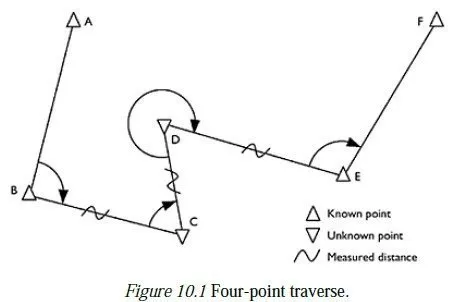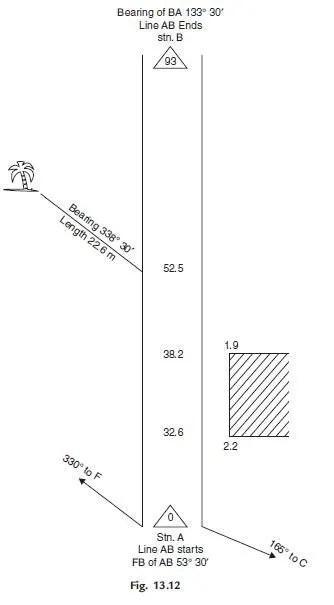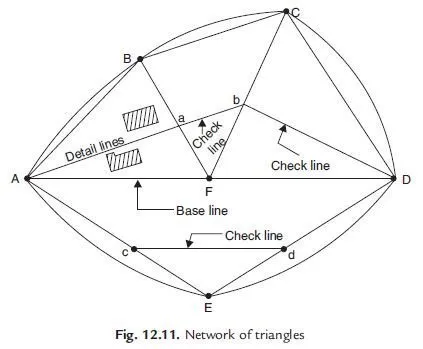A number of the techniques discussed in Chapter 3 require the measurement of angles, to a greater or lesser degree of accuracy. Horizontal and vertical angles can be measured approximately using a compass and clinometer, respectively; for more accurate work, a theodolite or total station will be needed. This chapter explains in detail how angles are measured using these instruments.
4.1 The surveyors compass
The standard surveyors compass is a hand-held device which shows the bearing of a line relative to magnetic north. A graduated circular card incorporating a bar magnet rests on a low-friction pivot; prisms or mirrors and sights are arranged so that the graduations on the card may be read whilst making a sighting on the distant point. Damping is incorporated, and there is usually a locking device for the card whilst the instrument is not in use. Bearings may be read to 0.5° (or 1 part in 120, when the angle is converted to radians). The angle subtended by two stations at a third one can thus be estimated to within a degree by taking the magnetic bearings of the two stations from the third, and subtracting one reading from the other. Note however that the bearings themselves are shown with respect to magnetic north, rather than true north (where all the meridians meet) or grid north. The difference between these different bearings can be in excess of 5° and is explained in Chapter 9.
4.2 The clinometer
In its simplest form, a clinometer consists of an optical sighting system with a pendulum attached to it. The pendulum has a protractor attached to it, so that the inclination of the sight line can be measured. A distant object is observed through the sights, and a prism enables the protractor to be read at the same time, giving the vertical angle between the observers eye and the distant object to approximately 20 seconds. When using a clinometer, be sure to note whether a zenith angle is being read (i.e. the angle made with the vertical) or a slope angle (i.e. the angle made with the horizontal). A variation on the clinometer is the sextant, which is typically used at sea to measure the vertical angle of the sun or of another star. Here, the horizon is used as a reference direction instead of a pendulum, and the optics of the device allows the difference in vertical angles to be observed. This is more useful on a boat at sea where (a) the horizon always defines a near-horizontal reference direction and (b) a pendulum would be likely to oscillate.



